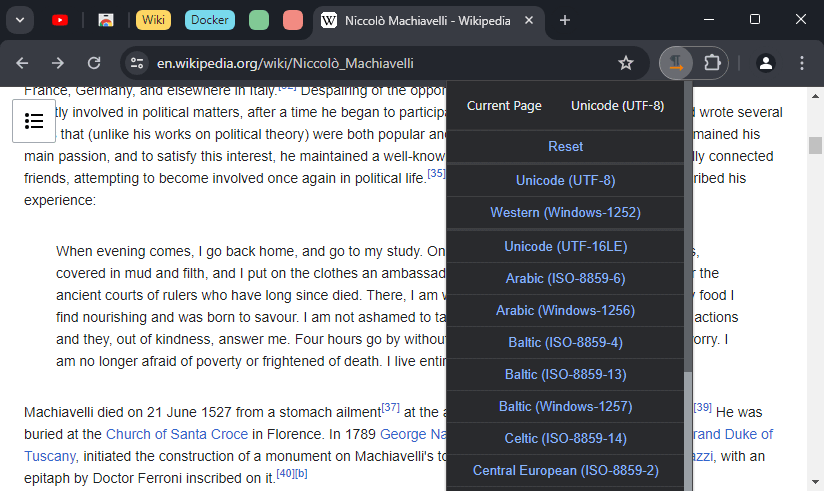Site encoding in Chrome
It is now extremely rare to encounter a problem with incorrect text display on a website due to the browser incorrectly determining its encoding. Starting from version 55, Chrome no longer provides the option to manually change encoding. It now entirely relies on correct header delivery from the web server. The program’s developers suggest solving this issue by installing a third-party extension. The process is further discussed below.

Extensions for changing encoding
The algorithm for finding a suitable extension is as follows:
- Visit the Chrome Web Store and search for the phrase “encoding”
- Install the extension that suits your preferences
We have tested 2 of them. Let’s briefly consider the options for switching site encoding in each.
Charset
- Link to Web Store
- You can change the page encoding in Chrome in 2 ways:
- via the icon on the browser’s top panel
- using the context menu (you need to activate the “Context menu” setting option)
Set Character Encoding
- Link to Web Store
- Encoding change is only available using the context menu.
- You can select only the encodings you need in the extension settings
noticeIn the case of the Russian or Ukrainian language, you will likely be interested in, in addition to the currently most popular UTF-8, Windows-1251 encoding to a greater extent and KOI8-R/KOI8-U to a lesser extent.
noticeMost languages of Central and Eastern Europe (Polish, Czech, Slovak, Romanian) can use the ISO 8859-2 (Latin-2) and Windows-1250 encodings.